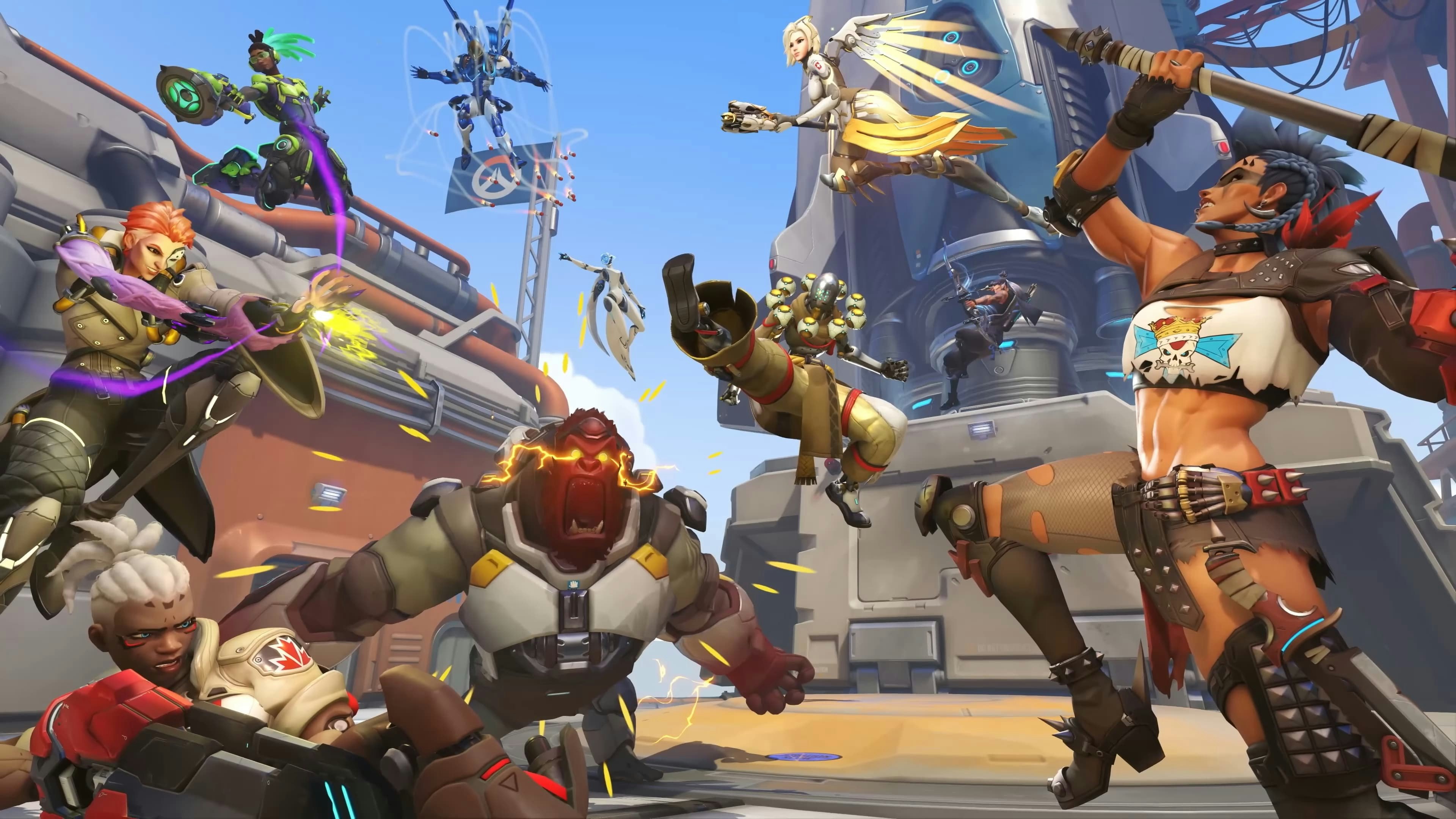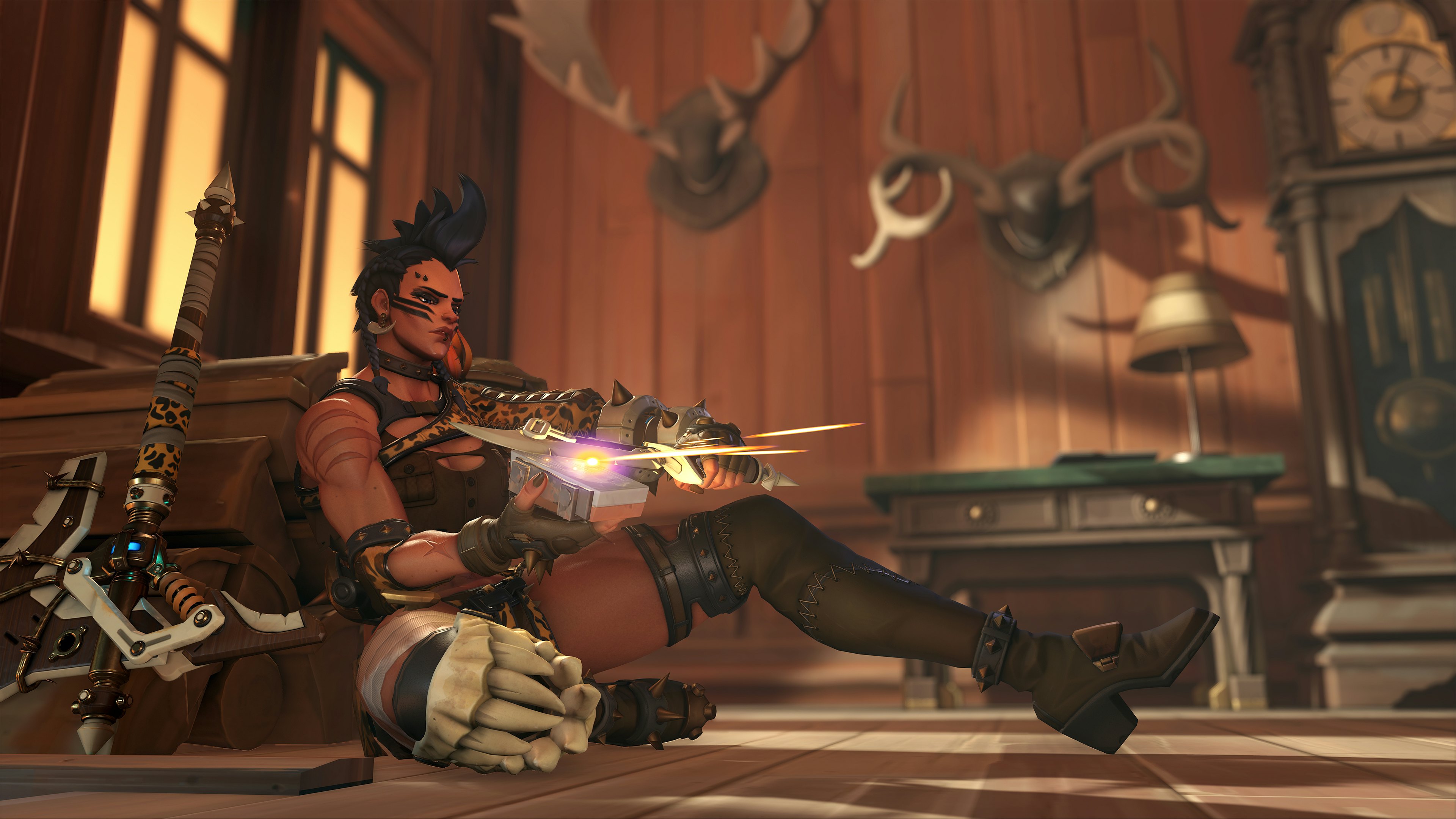
The greatest conflict in Overwatch 2 is deciding whether to play one more match.
I’m one of those sickos that often leads my team in eliminations as Moira, the mad scientist support hero whose Ultimate ability Coalescence can heal and deal damage simultaneously. If there’s a bottleneck brawl over a capture point or a payload, it’s the easiest thing in the world to nuke the pile of bodies, gently aiming for wounded allies and any squishy enemies with small health pools.
How can I not jump back in after earning the coveted Play of the Game accolade, which forces everybody to watch me be a game-winning badass?
The glory days of the original Overwatch — which has spawned countless copycat hero shooters since its 2016 launch — went a lot like this. That is until the game grew stale and I drifted away for nearly two years. Now, the compulsion is back.
Overwatch 2 reminds me of that scene from Mad Max: Fury Road where Nicholas Hoult’s Nux desperately spits Guzzolene directly into a vehicle’s engine with chapped lips to give it a boost. It’s risky, chaotic, and it absolutely works.
35 different games
Overwatch’s signature charm has always been its vibrant cast of characters, which hit 35 heroes with the launch of the sequel. Not only is the voice acting top-notch, but the variation in archetypes and skillsets is weird, playful, and even baffling.
There’s a little dwarf guy with a robot arm who builds turrets and sometimes dresses up as a short Santa Claus. His daughter is a buff brawler twice his height, who wears heavy armor and heals her allies whenever she whacks somebody with her flail. Her mentor is an aging German knight with a huge barrier shield and a rocket-powered hammer. There’s also a zen robot who throws balls all over the place. The world of Overwatch is an engaging and immersive one, despite a minimalist approach to storytelling told mostly through voice lines.
The brilliance of Overwatch’s core gameplay loop is a lot like the Smash Bros. franchise: It’s easy to dabble but difficult to master. Once you get down the basics of one character, you can apply that knowledge to others. At the same time, swapping classes — like going from a tank to a support — feels like a totally different experience. But because you can still apply your basic knowledge of the game’s overall strategy, it still feels rewarding.
That’s Overwatch’s secret sauce: Characters feel unique but familiar, and it takes a very long time for things to get stale. Whenever I get bored or frustrated playing as Moira, I can switch to Zenyatta if I want to stay a healer, or make the leap over to Junker Queen to try tanking for a while.

I don’t exactly miss Overwatch’s bland progression, which gave you a free loot box after each level-up. But there was something fun about receiving random rewards and watching them hit your inventory with an explosion of fireworks. In Overwatch 2, you barely even get a notification when you get something via the new battle pass. Despite the lack of ceremony, the battle pass is a welcome addition, with daily, weekly, and season-long challenges that provide a meaningful excuse to play different game modes and use different heroes.
What I miss most are the medals awarded for first, second, and third place in categories like most damage dealt or most eliminations. Vying for “gold elims” was half the fun of the original game, and seeing them awarded at the end of each match felt triumphant.
What happened to all of the fanfare?
This is not Overwatch 1.5
Naysayers have called Overwatch 2 a glorified update rather than a true sequel. Had it launched with its story-based PvE campaign complete with progression, skill trees, and other RPG elements, that would be a different story. Moment-to-moment gameplay and graphics are indeed mostly the same, but a lot more has changed under the hood.
The most prominent difference between the original and the sequel, however, is the shift from 6v6 to 5v5 team comps. Previously, teams would have two tanks to soak up damage, two damage characters to eliminate enemies, and two support characters to heal everyone. Competitive play forced that team composition on every match, which is why the original game got stale.
Now, 5v5 means one less tank on the field. (Casual modes in both games offer more flexibility.) The end result is a faster, tighter, and more energetic feel to combat — but it does sacrifice balance. With 12 players on the field, a single player could only do so much. Now, certain characters in the right hands can essentially carry their team, with tanks taking on an even more important role. Virtually every hero on the roster has been reworked to accommodate this simple, but far-reaching gameplay change.

The introduction of passive abilities for each role sounds subtle on paper, but when Reaper goes on a spree, gaining a 25 percent boost to movement and reload speed for 2.5 seconds with each elimination, he becomes a lot more deadly. Across the board, these passives and individual character toolkits incentivize a more aggressive approach to play that emphasizes hero roles more than ever before. It’s an elevated version of the original’s execution that takes some getting used to, but once you do, it’s a lot more fun and satisfying, because the big plays get even bigger.
Room to Grow
Between the muddled hype cycle and the most disastrous launch since Cyberpunk 2077, Overwatch 2 felt destined to fail. And yet, despite the growing pains and server issues, the gripping compulsion to play Overwatch is back. As far as I can tell, it isn’t going anywhere anytime soon.
The foundation is good enough that Overwatch 2 might one day surpass the original, and fixable bugs and balancing changes comprise most of the current roadblocks. As of this writing, Bastion has been removed from the game due to a game-breaking bug, but it’ll be fixed in due time. As a live-service game, Overwatch 2 is best judged by where it’s going rather than focusing too much on its bungled launch.
In a press briefing shortly before the game’s launch, Blizzard outlined some of its plans for upcoming seasons, and it looks like future heroes will be just as complex and interesting as newcomers Kiriko, Sojourn, and Junker Queen. Each nine-week season for the foreseeable future will introduce a battle pass full of cosmetics in addition to a new map, hero, or both. The pace should remain relentless (in a good way).

Maybe it has a lot to do with my newfound love for Junker Queen, the hyper-aggressive frontline tank. Like all my favorite heroes, her toolkit is a complex combination of disparate abilities that force you to rely on split-second intuition. It helps that, like Roadhog and Junkrat, she looks like she stepped right out of a Mad Max movie.
If anybody is spitting Guzzolene into the Overwatch 2 engine, it’s her — either that, or she’s making Junkrat do it while she takes the wheel and steers them toward something dangerous.
8/10
Overwatch 2 is available now for Nintendo Switch, PS4, PS5, Xbox One, Xbox Series X|S, and PC. Inverse reviewed the game on PS5.
INVERSE VIDEO GAME REVIEW ETHOS: Every Inverse video game review answers two questions: Is this game worth your time? Are you getting what you pay for? We have no tolerance for endless fetch quests, clunky mechanics, or bugs that dilute the experience. We care deeply about a game’s design, world-building, character arcs, and storytelling come together. Inverse will never punch down, but we aren’t afraid to punch up. We love magic and science-fiction in equal measure, and as much as we love experiencing rich stories and worlds through games, we won’t ignore the real-world context in which those games are made.







